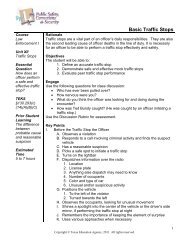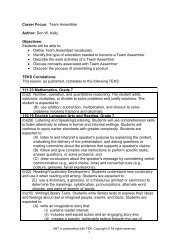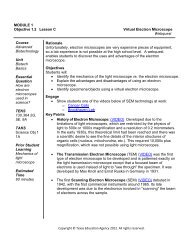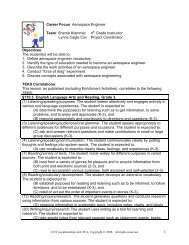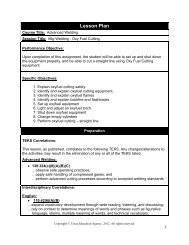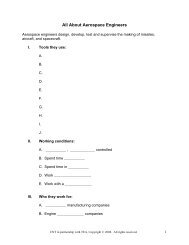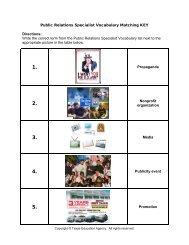Classroom Management: Teacher-Student Relationships
Classroom Management: Teacher-Student Relationships
Classroom Management: Teacher-Student Relationships
You also want an ePaper? Increase the reach of your titles
YUMPU automatically turns print PDFs into web optimized ePapers that Google loves.
TRANSCRIPTimpulse control, inability to stay seated and work quietly, desire to yell questions andanswers, inability to take turns, and tendency to frequently interrupt other people who arespeaking.Slide 35: The second group of students with attention problems is known as inattentive. Thesestudents fail to show attention to detail, rarely appear to listen, appear unorganized, areforgetful, and seem easily distracted by outside forces.Slide 36: Our fourth type of student is the perfectionist. Often diagnosed with Obsessive-Compulsive Personality Disorder, these students are overly self critical, have low self esteem,fight feelings of inferiority and vulnerability, and feel that they are liked or loved for whatthey do rather than for who they are. For these students, being perfect is the only way togain love, respect, and attention. Be warned, perfectionists are often self-destructive, andtheir perfectionist behaviors, if extreme, can lead to depression or suicide.Slide 37: Our last type of student is the socially inept student. Socially inept students exhibitthe following traits: difficulty making and keeping friends, lack of respect for personal space,excessive talking, making embarrassing remarks, misreading the comments of others, and aninability to fit in with existing social groups.Slide 38: Working with students certainly presents ongoing challenges. Creating positiveteacher-student relationships with student needs in mind is critical for managing a classroom.Remember to balance the appropriate levels of dominance and cooperation whilemaintaining an interest in the students as individuals. Developing appropriate teacherstudentrelationships will contribute to a positive and healthy classroom environment whereall students can engage in learning.Slide 39: TIP: Spend some time reflecting on the five categories of students presented. Do younow or have you in the past fit into any of these categories? How would you have wantedyour teachers to create and maintain relationships with you?Slide 40: To read more on this topic, check out <strong>Classroom</strong> <strong>Management</strong> That Works by RobertMarzano.Slide 41: Let’s look at some review questions to review some of the key points. Try to answerthe question on your own before advancing to the next slide for the correct answer.Question 1: When developing effective teacher-student relationships is it more important topossess high dominance or high cooperation?Slide 42: Answer: Neither. <strong>Teacher</strong>s should strive for moderate levels of dominance andcooperation.7




